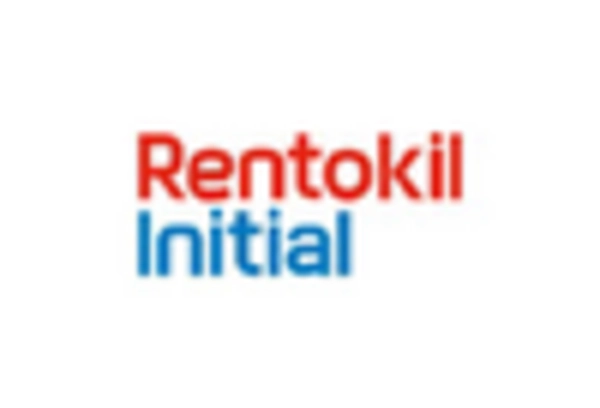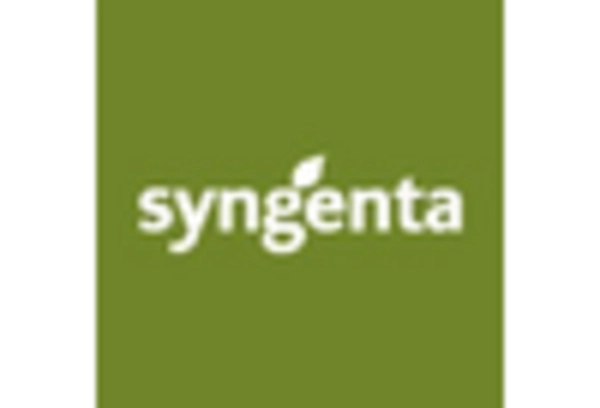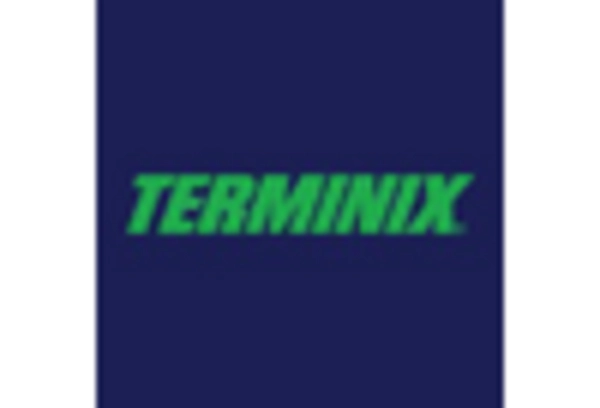The Rodent Control Pesticide Market is characterized by a dynamic competitive landscape, driven by increasing urbanization, rising health concerns related to rodent-borne diseases, and stringent regulatory frameworks. Major players such as Bayer (DE), Syngenta (CH), and Rentokil Initial (GB) are strategically positioned to leverage innovation and sustainability in their product offerings. Bayer (DE) focuses on developing environmentally friendly solutions, while Syngenta (CH) emphasizes integrated pest management strategies. Rentokil Initial (GB) has adopted a customer-centric approach, enhancing service delivery through technology. Collectively, these strategies not only enhance their market presence but also shape a competitive environment that increasingly prioritizes sustainability and technological advancement.
Key business tactics within the Rodent Control Pesticide Market include localizing manufacturing and optimizing supply chains to enhance responsiveness to regional demands. The market structure appears moderately fragmented, with a mix of large multinational corporations and smaller niche players. This fragmentation allows for diverse product offerings and competitive pricing, although the influence of key players remains substantial, as they set industry standards and drive innovation.
In August 2025, Bayer (DE) announced the launch of a new line of biodegradable rodenticides, which aligns with the growing consumer demand for sustainable pest control solutions. This strategic move not only positions Bayer as a leader in eco-friendly products but also responds to regulatory pressures for reduced environmental impact. The introduction of these products is likely to enhance Bayer's market share and appeal to environmentally conscious consumers.
In September 2025, Syngenta (CH) expanded its partnership with local pest control companies in North America to enhance its distribution network. This collaboration aims to improve service delivery and customer engagement, thereby increasing market penetration. By leveraging local expertise, Syngenta is expected to strengthen its competitive edge and adapt more swiftly to regional market dynamics.
In July 2025, Rentokil Initial (GB) launched an innovative digital platform that integrates AI technology for real-time monitoring of rodent activity. This platform not only enhances operational efficiency but also provides clients with actionable insights, thereby improving pest management strategies. The adoption of such technology signifies a shift towards data-driven solutions in pest control, positioning Rentokil as a forward-thinking leader in the industry.
As of October 2025, current competitive trends in the Rodent Control Pesticide Market are increasingly defined by digitalization, sustainability, and the integration of artificial intelligence. Strategic alliances among key players are shaping the landscape, fostering innovation and enhancing service delivery. Looking ahead, competitive differentiation is likely to evolve from traditional price-based competition to a focus on technological innovation, sustainability, and supply chain reliability, reflecting a broader industry shift towards more responsible and effective pest management solutions.

















Leave a Comment